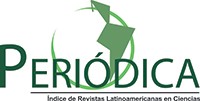THE ALBUM IN THE TEACHING-LEARNING PROCESS OF INVERTEBRATE ZOOLOGY
DOI:
https://doi.org/10.24039/rtb20222021440Keywords:
Album, teaching media, Information and Communication Technologies, teaching learning process, Invertebrate ZoologyAbstract
The objective of the research work was to propose a teaching method that allowed the self-management of knowledge related to the zoology of invertebrates by the students of the 3rd year of the Bachelor of Education career, comparing in-person learning vs. those not in attendance. For the development of the research, information gathering and processing methods were used, which allowed us to verify the shortcomings in terms of the use and elaboration of this type of teaching medium, for the teaching-learning process from the non-face-to-face modality. The illustrations were made to correspond with the pedagogical and hygienic requirements, which contributed to the aesthetic education of the students and raised the interest in the didactic material. Suggestions and arguments made by different experts were taken into consideration, which were largely the basis for the realization of the work from the point of view of its methodological conception. The criteria offered by teachers and students once the album was implemented, in the teaching-learning process of Invertebrate Zoology in the academic year 2021, were also considered. The effectiveness of the developed teaching medium became evident, taking into consideration the results obtained by the students during the teaching-learning process of the subject. It is concluded that the topic addressed is important and coincides with the transformations that are taking place in the National Education System in Cuba in times of COVID-19.
Downloads
References
Armiñana, G.R. 2016. El estudio de la Zoología de los invertebrados mediante un sistema de medios de enseñanza asistido por computadoras. Ed. Educación Cubana.
Armiñana, G.R.; Castillo, F.Y.; Mesa, C.N.; Fimia, D.R.; Leyva, H.J.; Iannacone, J.; Durán, F.Y. & Fábrega, O.G. 2020. Nueva concepción didáctica para el proceso de enseñanza - aprendizaje de la zoología de los cordados. Paideia XXI, 10: 33-57.
Armiñana, G.R.; Fimia, D.R.; Torres, R.R.C.; Iannacone, J.; Guerra, V.Y. & Zambrano, G.P. 2021. Modelos en formato digital para el estudio del origen del celoma. The Biologist (Lima), 19: 175-185.
Azizah, N. & Aloysius, S. 2020. The effects of virtual laboratory on biology learning achievement: A literature review. Advances in Social Science, Education and Humanities Research, 541: 1-10.
Barberá, E. & Badia A. 2005. Hacia el aula virtual: actividades de enseñanza y aprendizaje en la red. Revista Iberoamericana de Educación, 36: 1-22.
Bermúdez, S.R. & Rodríguez, R.M. 2016. Lo empírico y lo teórico: ¿una clasificación válida cuando se trata de los métodos de la investigación científica? Pedagogía Universitaria, 21: 1-18.
Bilbao, M. 2017. Concepción teórico metodológica de la evaluación del aprendizaje en el aula virtual [tesis doctoral]. Santa Clara: Repositorio de publicaciones e Intercambio Científico, Universidad Central “Marta Abreu” de Las Villas. 276 pp.
Bulić, M.; Jelaska, I. & Jelaska, P. 2017. The effect of e-learning on the acquisition of learning outcomes in teaching science and biology. Croatian Journal of Education, 19: 447-477.
Chauca, M.; Phun, Y.; Curro, O.; Chauca, C.; Yallico, R. & Quispe, V. 2021. Disruptive innovation in active activity-based learning methodologies through digital transformation. International Journal of Information and Education Technology, 11: 1-5.
Christensen, C. & Eyring, H. 2018. The innovative university: Changing the DNA of Higher Education from the inside out. Jossey Bass.
DHAMM (Declaración de Helsinki de la AMM). 2013. Principios éticos para las investigaciones médicas en seres humanos. 64ª Asamblea General, Fortalez, Brazil, octubre. World Medical Association, Inc. All Rights reserved, p. 9.
Escontrela, R. & Stojanovic L. 2011. La integración de las TIC en la educación: Apuntes para un modelo pedagógico pertinente. Revista de Pedagogía, 25: 481-502.
Expósito, P.M.; Armiñana, G.R.; Fimia, D.R.; Gómez, G.M.A.; Artiles, V.L.; Olivera, B.D.; Iannacone, J. & Carballo, B.M. 2021. Vinculando a los escolares de la enseñanza media al conocimiento de las Especies Exóticas Invasoras de origen vegetal en Cuba. The Biologist (Lima), 19: 175-185.
Jiménez-Guerra, Y. & Ruiz-González, M.A. 2021. Reflections on the challenges that higher education faces in times of COVID-19. Economía y Desarrollo, 165(Supl. 1): e3.
Hartini, H.; Erlia, N. & Mochammad, P. 2019. Virtual Laboratory pada topik Kultur jaringan tumbuhan untuk meningkatkan hasil belajar siswa. Jurnal Pendidikan IPA Veteran, 3: 1-16.
Latin, K., Merdić, E. & Labak, I. 2016. Concept maps as a tool for better learning Biology in High School. Education Biologiae, 2: 1-12.
Mamani-Cori, V.; Padilla, T.; Cervantes, S.; Caballero, L. & Sucari, W. 2022. Estrategias y recursos didácticos empleados en la enseñanza/aprendizaje virtual en estudiantes universitarios en el contexto de la Covid-19. Revista Innova Educación, 4: 78-91.
Martínez-Ramírez, S. M. 2022. Google Classroom y Google Meet: ¿Medios tecnológicos necesarios en el proceso de enseñanza-aprendizaje durante la pandemia COVID-19?. Revista Dilemas Contemporáneos: Educación, Política y Valores, 9: 24.
Martínez, N.; de Gregorio, A. & Hervás, R. 2012. La evaluación del aprendizaje en entornos virtuales de enseñanza aprendizaje: notas para una reflexión. Revista Iberoamericana de Educación, 58: 1-16.
Martínez, D.D.T.; Ganiron, T.U. & Taylor, H.S. 2014. Multimedia tools for teaching basic electronics. International Journal of Education and Learning, 3: 23-34.
Mendonça, C. 2013. El uso de mapas conceptuales progresivos como estrategia de enseñanza y aprendizaje en la formación de profesores en Biología. Journal for Educators, Teachers and Trainers, 4: 107-121.
Moguel, S. F & Alonzo, D. L. 2009. Dimensiones del aprendizaje y el uso de las TIC 'S. El caso de la Universidad Autónoma de Campeche, México. Revista Iberoamericana de Educación a Distancia, 12: 195-211.
Penninton, R.C.; Stanger, C.; Mims, P.J.; Kirkman, C.; Aldridge, S.; Stanley, M. & Chapman, S. 2021. A pilot investigation of an autonomous technology-based instructional program for teaching sentence construction to students with extensive support needs. Journal of Special Education Technology, 36: 18-28.
Polancos, T.D. 2012. Effects of vee diagram and concept mapping on the achievement of students in chemistry. Liceo Journal High Education Research, 7: 1-12.
Salinas, I.J. 2007. Modelos mixtos de formación universitaria presencial y a distancia: el Campus Extens. Cuadernos de Documentación Multimedia, 6-7: 50-72.
Shurygin, V.Y. & Sabirova, F.M. 2016. Electronic learning courses as a means to activate students’ independent work in studying physics. International Journal of Environmental & Science Education, 11: 1743-1751.
Tejedor, S.; Cervi, L.; Tusa, F. & Parola, A. 2020. Education in times of pandemic: reflections of students and teachers on virtual university education in Spain, Italy, and Ecuador. Revista Latina de Comunicación Social, English, 78: 1-21.
Torres, R.C.; Armiñana R.; Fimia R.; Iannacone J.; Alvariño, L; Panduro, G. & Martínez, Y. 2020. Los foros en física en la formación inicial de Licenciados en Educación. Biología. Paideia XXI, 10: 389-406.
Velázquez, L. 2020. La COVID-19: reto para la ciencia mundial. Anales de la Academia de Ciencias de Cuba, 10: http://revistaccuba.sld.cu/index.php/revacc/article/view/763/792
Published
How to Cite
Issue
Section
License

This work is licensed under a Creative Commons Attribution-NonCommercial-NoDerivatives 4.0 International License.
Objeto: El AUTOR-CEDENTE transfiere de manera TOTAL Y SIN LIMITACIÓN alguna al CESIONARIO (Revista The Biologist (Lima)) los derechos patrimoniales que le corresponden sobre sus obras por el tiempo que establezca la ley internacional. En virtud de lo anterior, se entiende que el CESIONARIO adquiere el derecho de reproducción en todas sus modalidades, incluso para inclusión audiovisual; el derecho de transformación o adaptación, comunicación pública, traducción, distribución y, en general, cualquier tipo de explotación que de las obras se pueda realizar por cualquier medio conocido o por conocer en el territorio nacional o internacional.
Remuneración: La cesión de los derechos patrimoniales de autor que mediante este contrato se hace será a título gratuito.
Condiciones y legitimidad de los derechos: El AUTOR-CEDENTE garantiza que es propietario integral de los derechos de explotación de la(s) obra(s) y en consecuencia garantiza que puede contratar y transferir los derechos aquí cedidos sin ningún tipo de limitación por no tener ningún tipo de gravamen, limitación o disposición. En todo caso, responderá por cualquier reclamo que en materia de derecho de autor se pueda presentar, exonerando de cualquier responsabilidad al CESIONARIO.
Licencia de acceso abierto: El AUTOR-CEDENTE autoriza que manuscrito publicado en la Revista Científica The Biologist (Lima) (versión Impresa ISSN 1816-0719, versión en línea ISSN 1994-9073) permanece disponible para su consulta pública en el sitio web http://revistas.unfv.edu.pe/index.php/rtb/index y en los diferentes sistemas de indexación y bases de datos en las que la revista tiene visibilidad, bajo la licencia Creative Commons, en la modalidad Reconocimiento-No comercial- Sin Trabajos derivados –aprobada en Perú, y por lo tanto son de acceso abierto. De ahí que los autores dan, sin derecho a retribución económica, a la Escuela Profesional de Biología, Facultad de Ciencias Naturales y Matemática de la Universidad Nacional Federico Villarreal (EPB - FCCNM - UNFV), los derechos de autor para la edición y reproducción a través de diferentes medios de difusión.









































